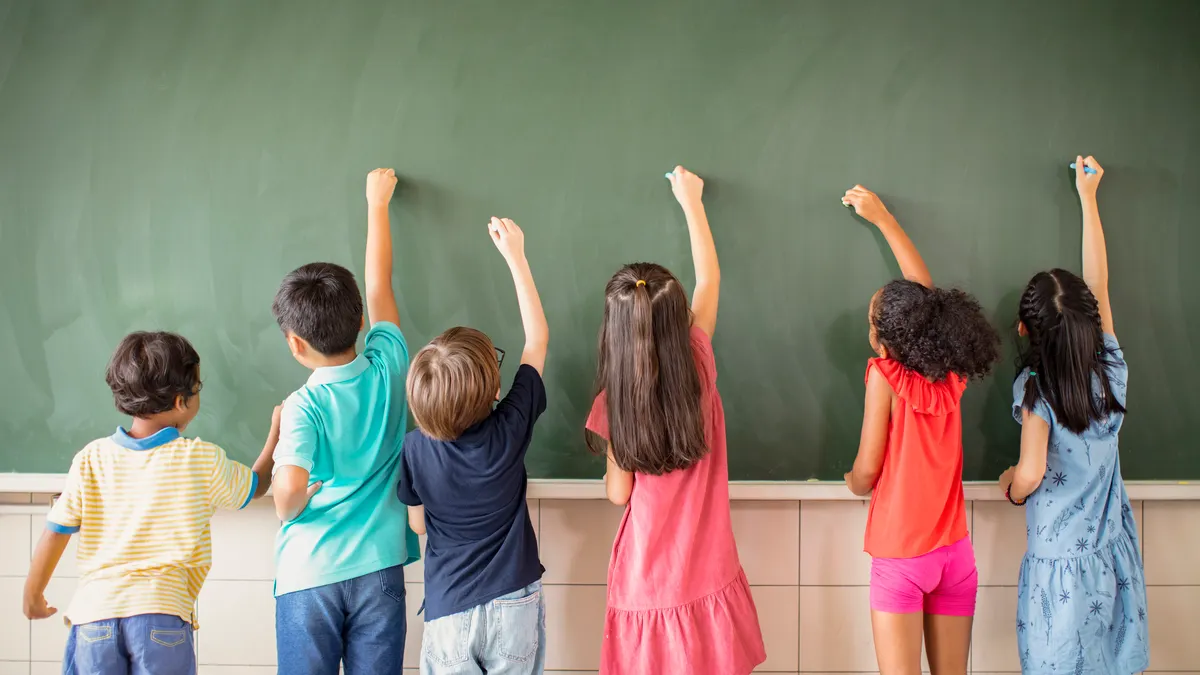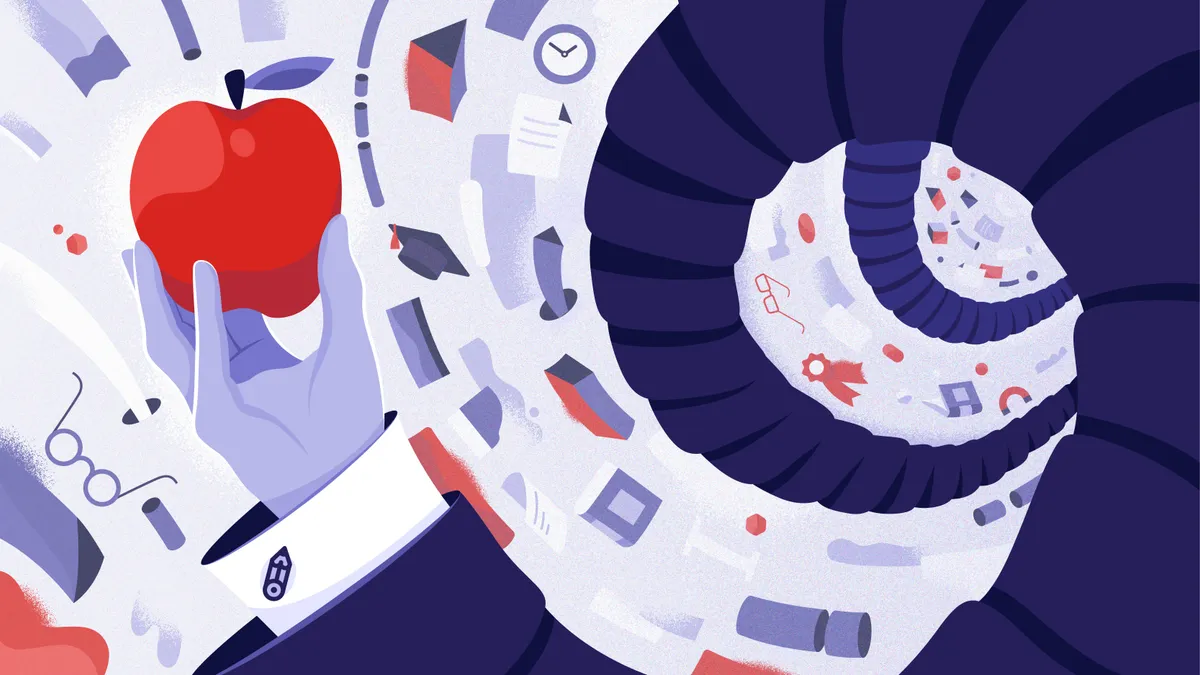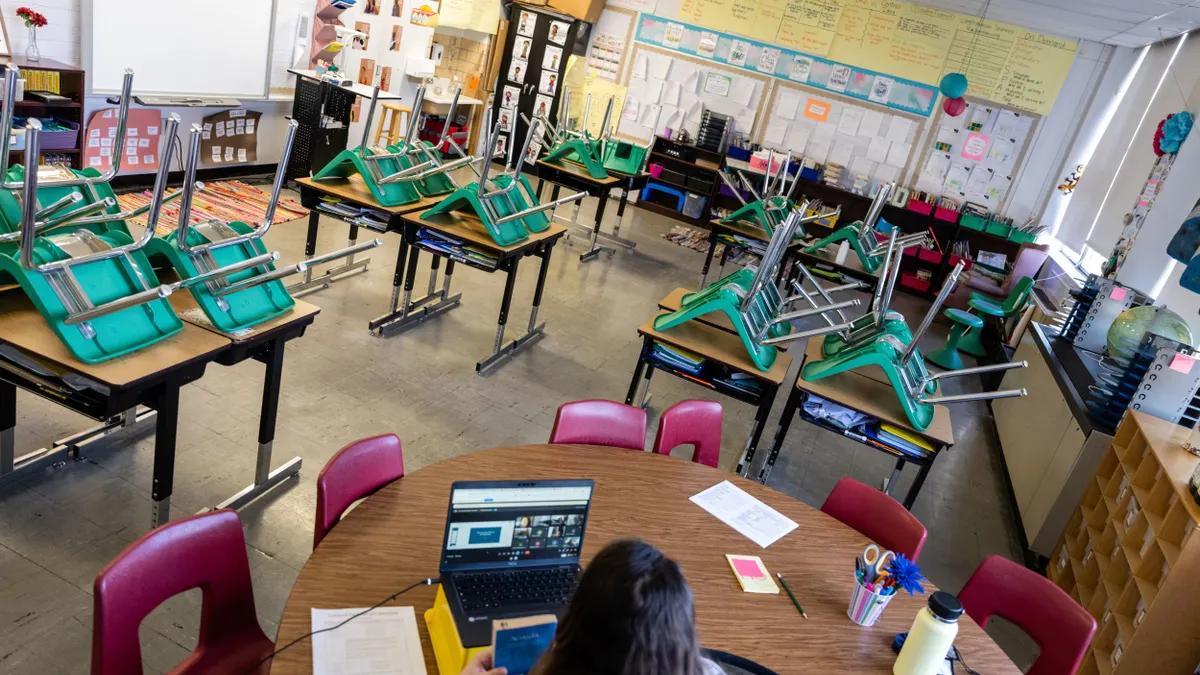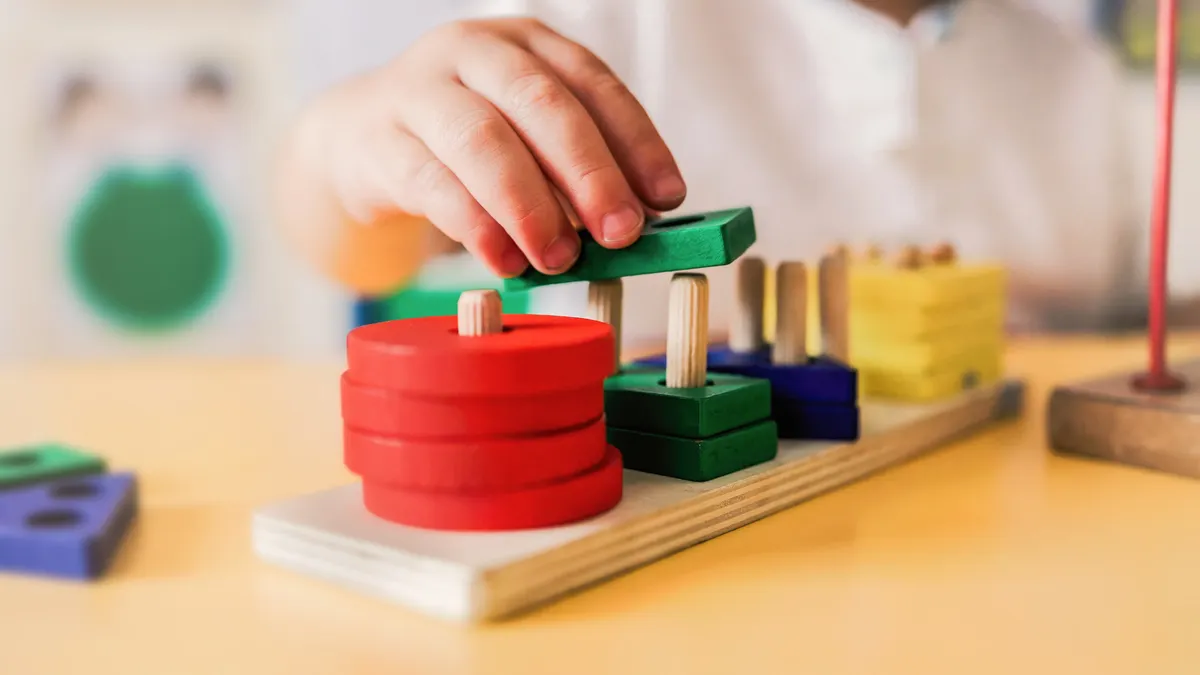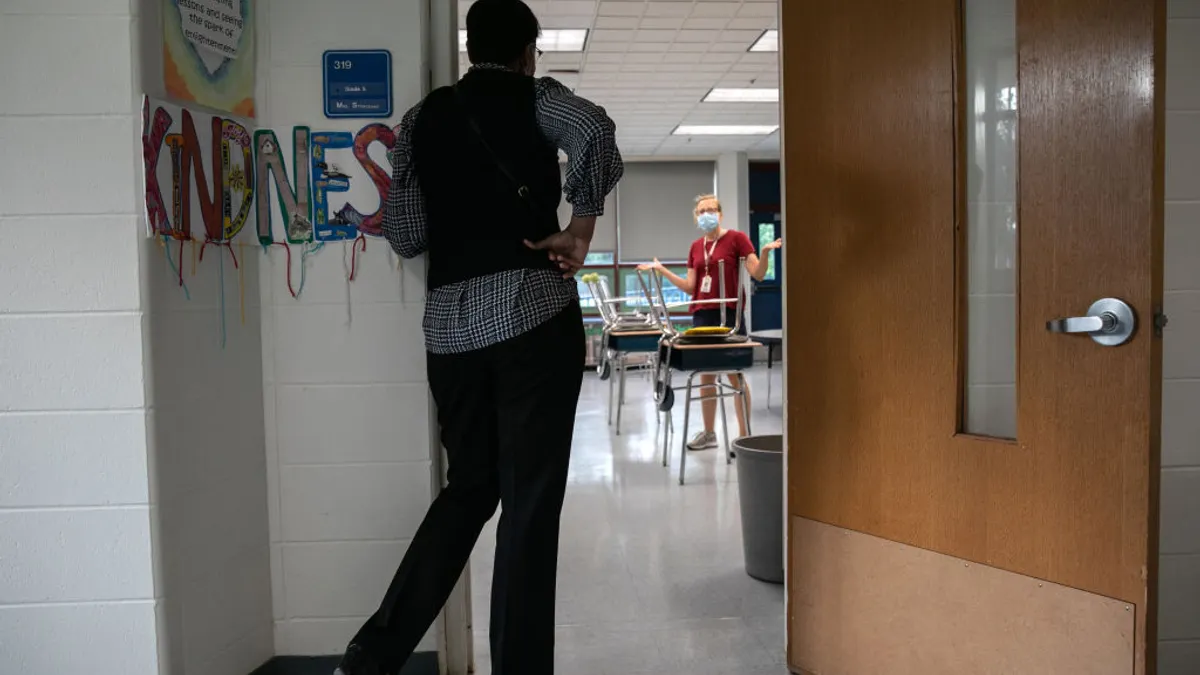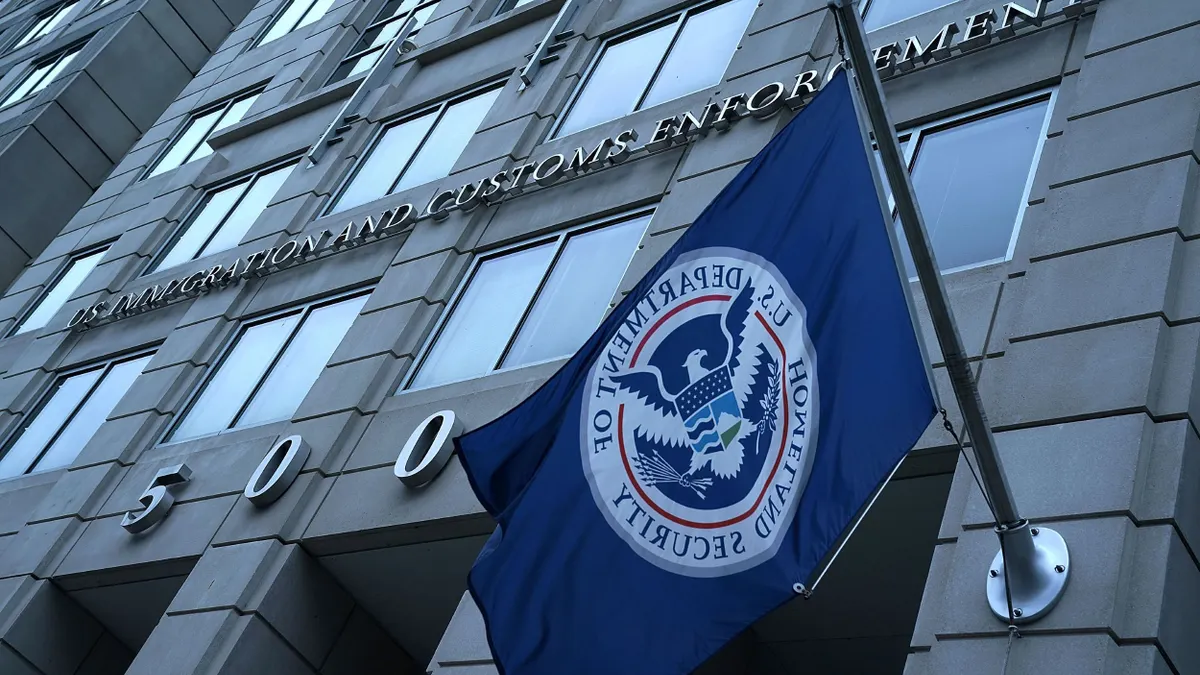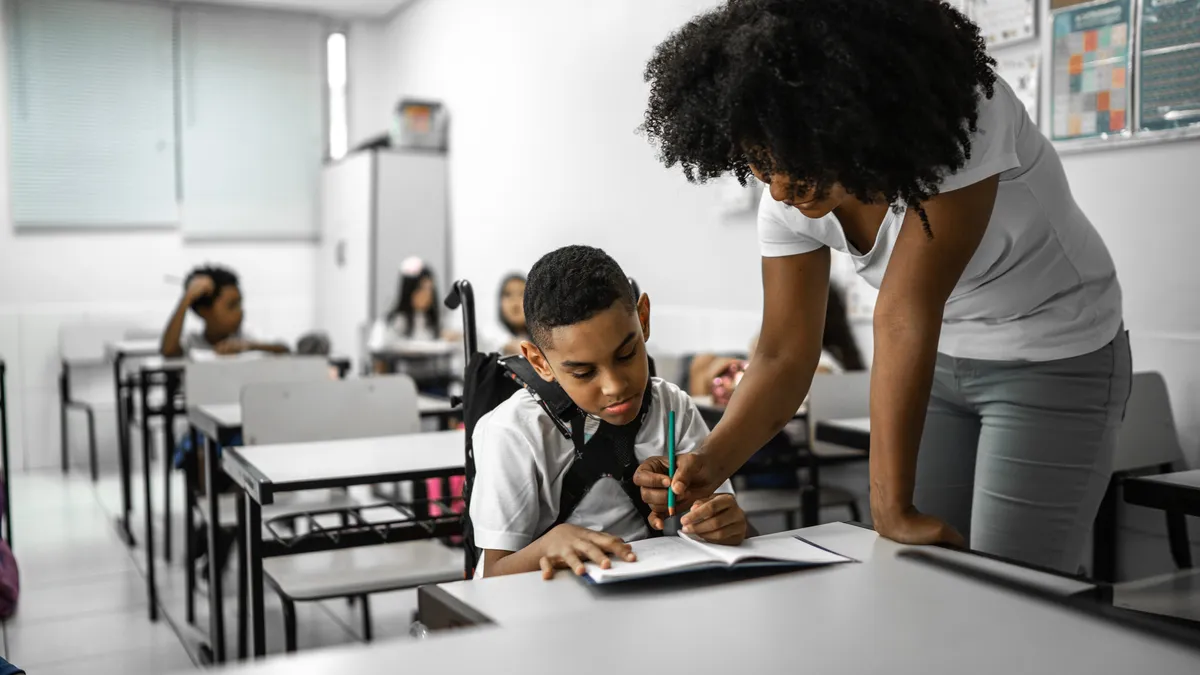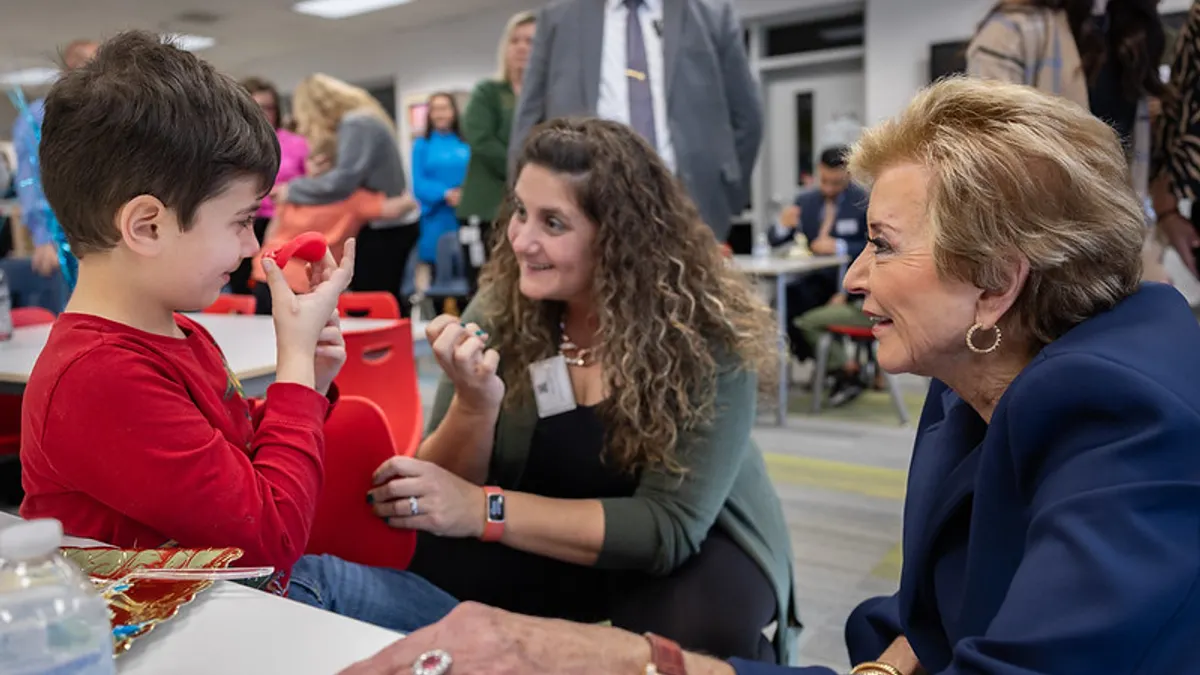Special education has become a "stopgap for a faulty" education delivery system that underserves millions of students even as the number qualifying for special education services continues to rise, a paper released Tuesday from the Center on Reinventing Public Education argues.
To solve this conundrum, CRPE recommends a more effective system for addressing all students' learning challenges and their varying needs for support. For instance, instead of sorting students into categories like special and general education, schools could use assessment tools to more quickly identify and act on students' individual academic and behavioral needs.
Likewise, teacher preparation programs traditionally offer separate pathways for special and general education. The CRPE paper suggests educator preparation programs instead train teachers to work in general education classrooms — teaching students who have diverse needs, with assistance from tutors and paraprofessionals. The paper promotes protecting specialized instruction, educational environments and support services for students with the highest needs.
CRPE researchers further suggest establishing a needs-based system to identify educationally disadvantaged students with and without diagnosed disabilities. This could "level the playing field" so that similarly disadvantaged students receive supports, but specialized instruction remains for students with the highest needs.
While special education services have helped multitudes of students, there are many others who struggle with reading, the English language or behavior but don't qualify for support and legal protections under the Individuals with Disabilities Education Act, the CRPE paper said.
For instance, the CRPE research presents a scenario where two students have learning challenges. One is diagnosed with a learning disability and qualifies for specialized instruction, individualized supports and legal rights under IDEA. The other student — who doesn't receive a learning disability diagnosis or qualify for IDEA services — gets "inadequate instruction" based on whatever the school chooses to supply.
In another example, the paper said students whose reading struggles are tied to dyslexia go into the special education system, but those whose reading challenges are rooted in poverty, language or poor instruction don't.
In other words, special education delivery is an "exclusionary" system that lacks reliable, nonsubjective and unbiased approaches for determining who is eligible for IDEA services because of a disability and those who face learning challenges because of other factors, such as race, household income and parental involvement, CRPE argues.
IDEA eligibility grows over 5 decades
The increase in students qualifying for special education services has been driven by those diagnosed with learning disabilities, autism, and other health impairments, which can include attention deficit disorder.
About 2 in 3 students who qualified for special education services in 2022-23 had a learning disability, autism or other health impairment. That's up from 1 in 4 in 1976. In 2023, about 15% of all public school students qualified for IDEA. In 1976, that figure was 9%.
CRPE's research said special education identification rates are a function of eligibility criteria. For example, the 1990 IDEA reauthorization added autism to the eligibility criteria, which allowed “many more children” to qualify, particularly students from affluent families. The IDEA eligibility data reveals how many students are qualified for special education services, but not how many students whose learning and behavioral differences affect their success in the classroom, the paper said.
To become eligible for IDEA services, a student must have a disability that’s included under one or more of the 13 disability categories in IDEA. Additionally, the student's disability must be impeding their ability to make educational progress.
"One of our primary goals is really trying to bring special education out of the shadows where it usually lives in our K-12 policy discussions," said Ashley Jochim, a senior fellow at CRPE. Jochim, along with Alexander Kurz, a senior fellow at CRPE, were key contributors to the paper.
The aim is to help policymakers and educators make better connections between general education and special education students so all students can succeed, the report said.
The research organization, which is housed at Arizona State University, plans to add to this conversation by speaking with educators, advocates and researchers, according to the paper.
"We think that there's an opportunity right now" for change, "given financial pressures that districts are experiencing, given increasing identification rates for special education," Jochim said. These pain points create opportunities “in a way that may have been less true in the past, and there's no question that the sustainability of what's occurring now, it just is not possible."
'Asking a fish to climb a tree'
The CRPE paper also argues the special education system favors IDEA compliance over accountability for student outcomes such as graduation rates and achievement gaps between students with and without disabilities.
This "dual" education system for special and general education is not effective, despite efforts at inclusion of students with disabilities in general education classrooms and approaches like multi-tiered systems of support for all students where interventions increase in intensity based on individual student needs, the CRPE paper said.
These special education reforms "have failed for the same reason: the system of general education was designed for uniformity, not difference," the paper said. "Asking it to accommodate differences without modifying its underlying technology is akin to asking a fish to climb a tree."
CRPE on Tuesday also released an interactive dashboard that it called the first digital record of special education identification rates by state and disability category.
The dashboard, which includes data dating back to 1976, shows, for example, that the portion of special education students in California nearly doubled from 7.3% of all students in 1976 to 13.5% in 2023. In 2000, the portion of K-12 students with autism in the state was 0.2%. By 2023, it was 2.5%.


